TABLE OF CONTENTS
Looking for a way to beef up the struggling GPU in your laptop? Is your animation rendering taking too long to complete and are your games stuttering?
Wondering if you can turn that MacBook into a pretty solid gaming or 3D work machine without having to buy a whole new computer?
Well, there’s a way, and it’s called External Graphics Cards or eGPUs.
What Are eGPUs?
External GPUs (eGPUs) are graphics cards that you use, well, externally.
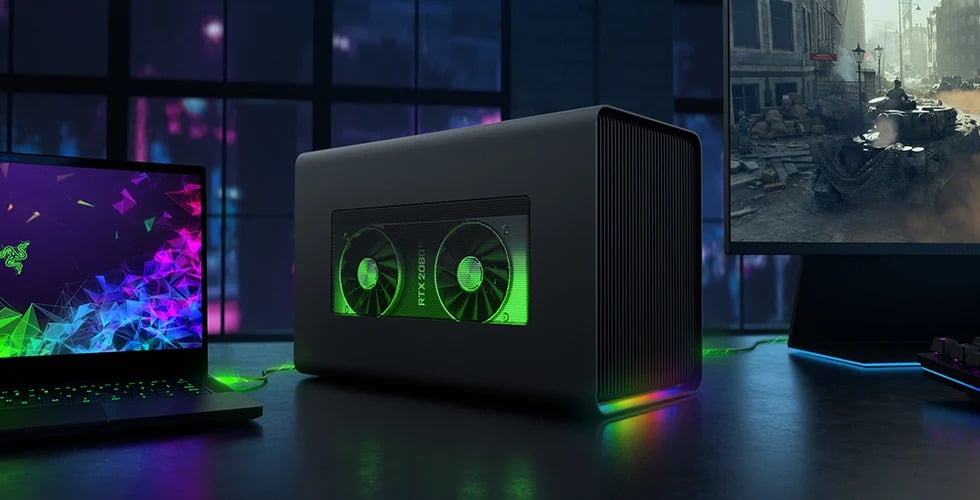
Image-Credit: Razer
You use a special type of connector that sends data from your external GPU to your laptop which allows you to use a full-sized desktop GPU as a graphics card as opposed to the slower graphics on your laptop.
It’s not as easy just connecting a single cable though, you need to provide the GPU with power, and for that, you’ll need a dedicated PSU capable of delivering enough power to the GPU.
You also need a way to actually connect the GPU connector to your laptop—it’s not as easy as plugging in a USB sadly.
That looks cumbersome, why would anyone even need that?
Yes. It does look cumbersome, but thankfully we’re not talking about those hacky methods, we’re talking about GPU Enclosures.
Why Would You Need an eGPU Enclosure?
An eGPU enclosure is one of the best ways of seriously upgrading your laptop.
Laptops are great. Matter of fact, they’re so great that we’ve made a ton of articles about them.
But one thing that they’re not the best at is delivering desktop-class performance. But that’s pretty much a given.
A laptop is like 1/10th the size of a desktop. You can’t expect something like that to match the performance of a fully decked-out computer.
But, you can get close; through the power of a wonderful little thing called an eGPU enclosure.
Generally, semi-modern to modern laptops that aren’t super cheap have pretty decent hardware.
A CPU in a laptop can generally perform to about 70 – 85% of what its desktop counterpart can offer.
And storage, ram, etc are also pretty comparable to their desktop variants.
However, GPUs are a bit of an outlier here. A laptop variant of a modern desktop GPU can only really achieve about 50 – 70% of what its desktop counterpart can do.
And that mainly comes down to cooling and power limits.
GPUs are hot. They’re really hot. And they down power like nothing.
They can easily be the most power-hungry and hottest piece of hardware in your machine—especially when you’re doing something so power-hungry like rendering.
So if you want to jam something like that into a laptop, you’re going to need to make some cuts.
And this usually means lower clock speeds, fewer cores, and lower power limits—the amount of power the GPU can draw.
This all makes it so that mobile variants of the desktop GPUs are leaving quite a bit of performance on the table.
But that’s assuming you even have that.
Most laptops don’t even come with a dedicated GPU. They use the far less performant iGPUs —the ones in the CPUs—as their GPU.
This generally means better battery life and higher portability because of lower power requirements, but it also means way lower performance.
This is what an eGPU fixes, or tries to, anyway.
The Cons of an eGPU Setup
eGPUs won’t give you the full performance of a GPU. That’s the biggest thing.
Even though you’re using a full-sized desktop graphics card, you will not have the same performance as compared to plugging the GPU into a desktop.
This is because of bandwidth limitations.
Let me give you an example.
Modern USB-C connections typically run at around 10 Gb/s (Gigabits per second).
Quick refresher: 1 Gb (Gigabit) = 0.125 GB (Gigabyte)
The Thunderbolt 3 connection that is required by most eGPU enclosures runs at around 40 Gb/s.
The PCIe Gen 4 x16 slot (what you’d plug your GPU into in a desktop) can transfer at speeds of about 252 Gb/s.
Do you see the problem here? The GPU is getting choked—and not in a fun way. Imagine that you’re extremely dehydrated but you can only drink through a very thin straw.
So, generally, you can expect to get about 40 – 75% of the performance of the card if it was in a desktop computer.
Higher power cards require more bandwidth, which means more performance lost, and the inverse is true for lower power cards.
But that’s still better than a weak laptop GPU or nothing at all.
There’s also the bulk factor.
eGPU enclosures are large. They’re bulky pieces of hardware that need to be able to accommodate a full desktop GPU and a power supply powerful enough for it.
They pretty much turn your laptop into a desktop, in a physical sense, because you’re not going to be moving much when you have an eGPU attached.
But you can easily attach it whenever you need the extra horsepower and detach it whenever you need the portability.
And finally the cost.
eGPU enclosures are pretty costly. That’s just how it is, sadly. They can range anywhere from $200 to over $500 and can easily cross the $1000 mark if they come with a GPU.
Which is the other thing. Most eGPU enclosures don’t come with a GPU. You need to supply your own GPU.
If you have a GPU lying around, then great! But if not, the GPU alone can add $300+ to the total cost.
And at that point, there’s an argument to be made about whether it’d be wiser to just save up a bit more and get a brand new laptop/computer instead.
But eGPU enclosures are the only way you can have desktop-class performance at home and still have total mobility with your laptop when you need it.
Knowing all of that, if you still want to buy an eGPU Enclosure, here’s what you should know…
What to Consider Before You Get an eGPU Enclosure
The main things are Space, Power, and the most important Thunderbolt connection.
Space
eGPU enclosures are pretty big. Definitely bigger than your laptop, but far smaller than a full desktop.
Still, if you’re strapped for space, it might not be a great idea to get an eGPU enclosure.
But most manufacturers give dimensions of the enclosure, so you can use that to figure out whether you have enough space to place it on your desk.
Of course, the eGPU Enclosure should also be large enough to house the GPU you already have or plan on buying for it.
Check both the dimension compatibility and slot thickness that the enclosure will allow you to use.
Power
You need to power the GPU and for that, you’ll need a good PSU (Power Supply Unit).
Most eGPU enclosures come with their own power supply, but they’re usually not great when it comes to efficiency or fan noise, so it might still be a good idea to look into getting your own power supply if you want something that is cooler/can output more power.
Thunderbolt Connection
If you’re going to use an eGPU enclosure, you need to have a Thunderbolt 3 port on your laptop, or else it won’t work.
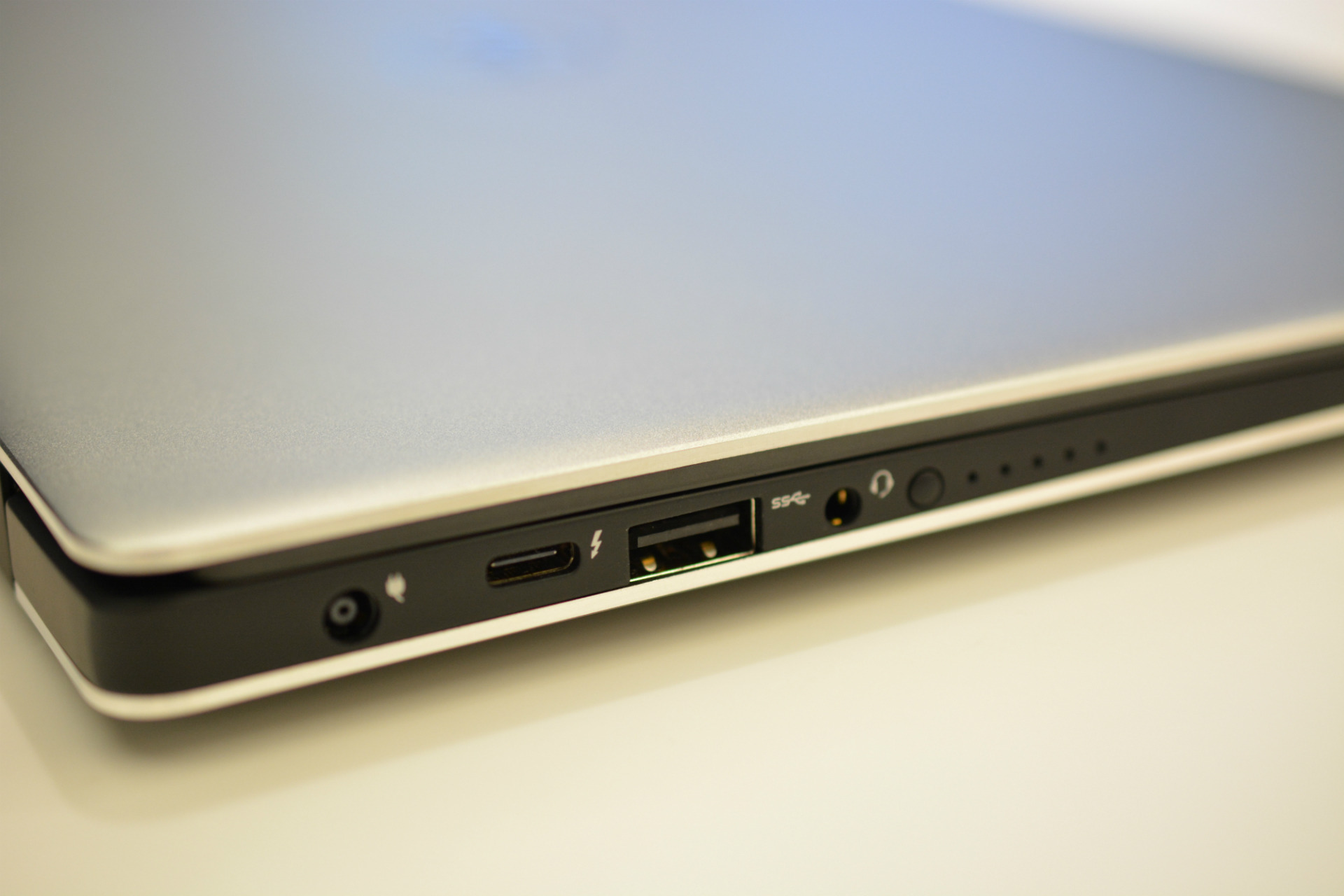
Image-Credit: Ars Technica
Most laptops have that tiny lightning symbol Thunderbolt port that allows you to use any of these enclosures.
If you don’t have this port, you sadly won’t be able to use these eGPU enclosures.
Best eGPU Enclosures for Rendering
Cooler Master MasterCase EG200
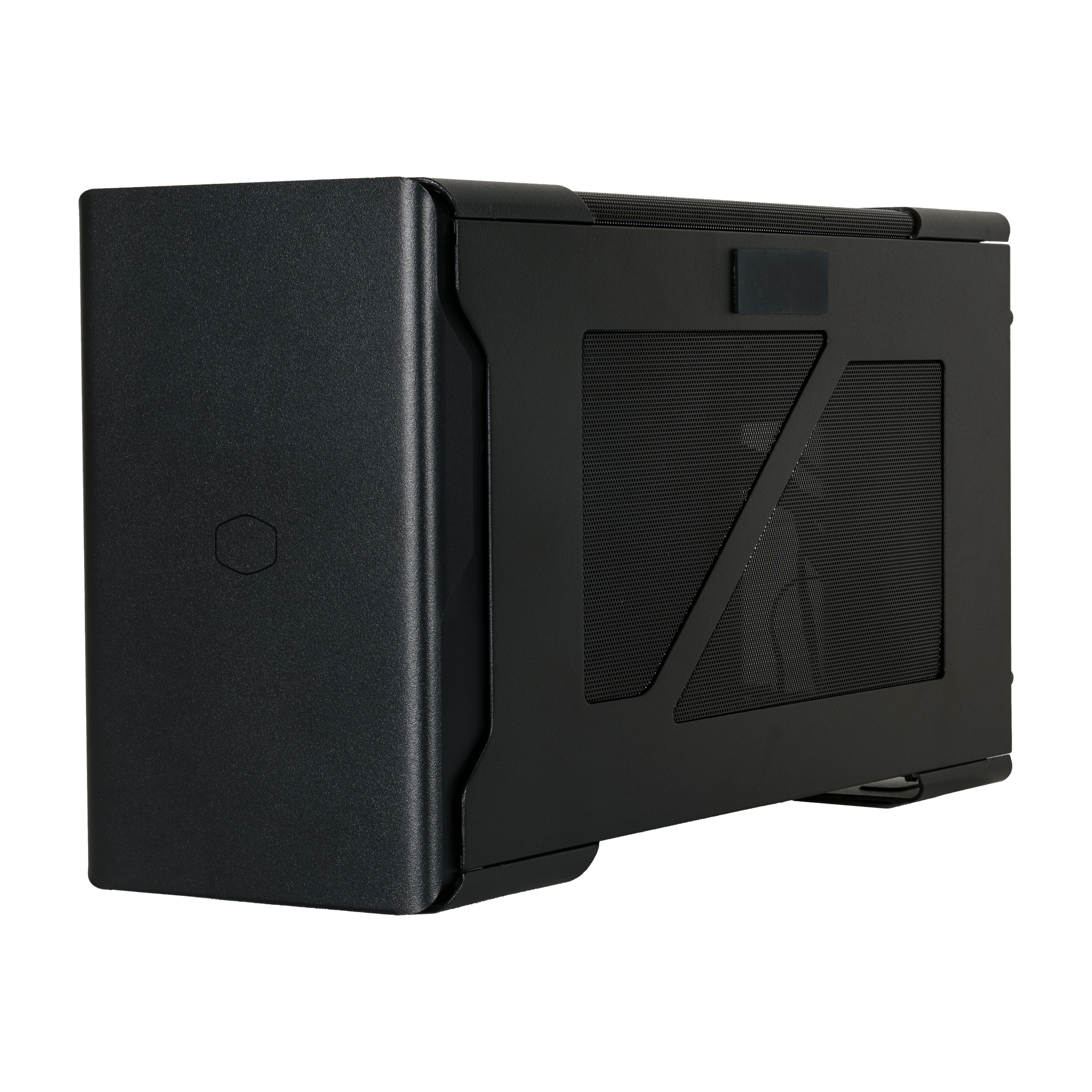
Image-Credit: Cooler Master
The Cooler Master MasterCase EG200 is a wonderful eGPU enclosure with a ton of handy features, easy assembly, good ventilation, and even comes with a well-rated sturdy power supply.
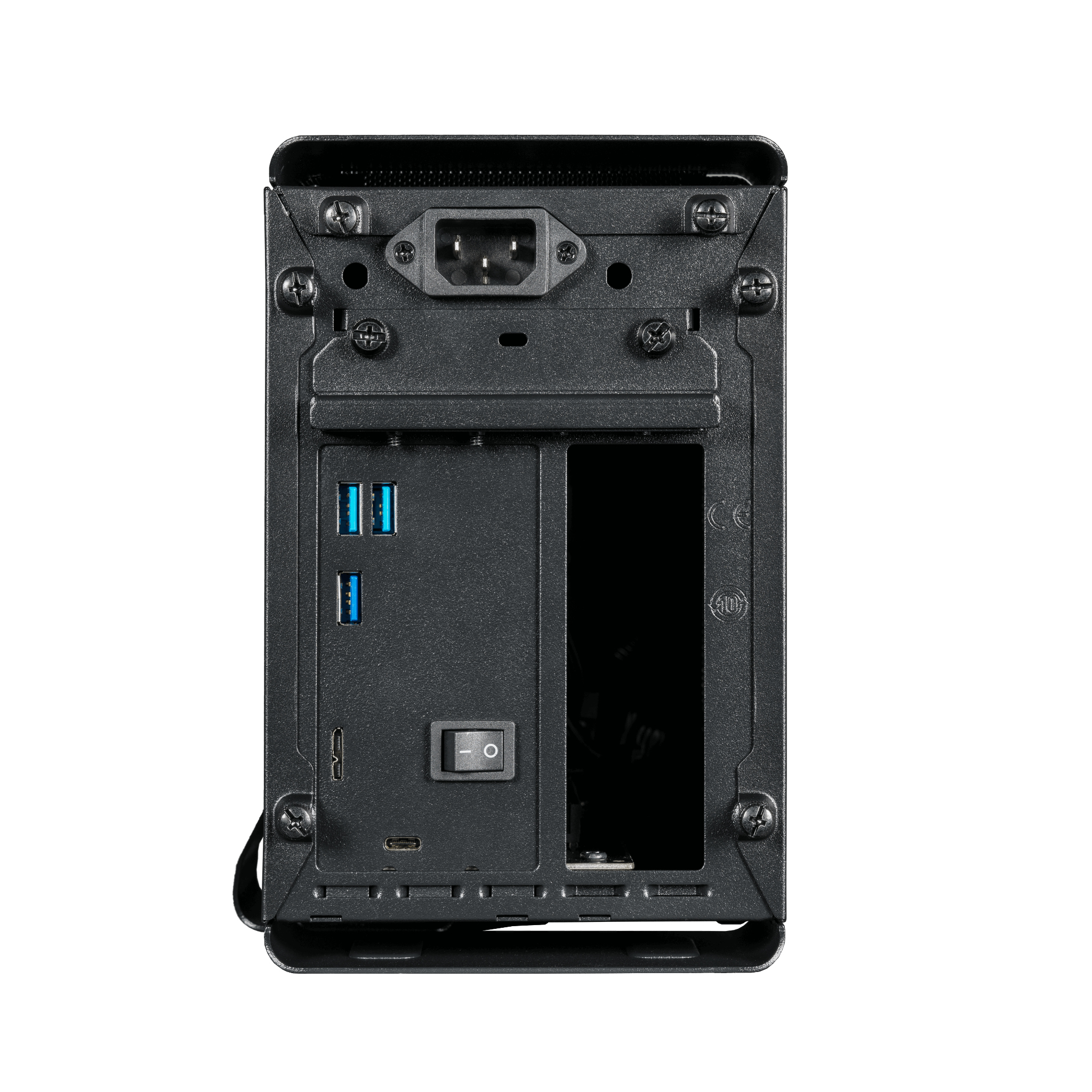
Image-Credit: Cooler Master
It comes with Cooler Master’s very own V550, a gold-rated, fully modular power supply that’ll handle any GPU you throw at it with ease.
And if that wasn’t enough, it also has a built-in USB hub and a hard drive dock!
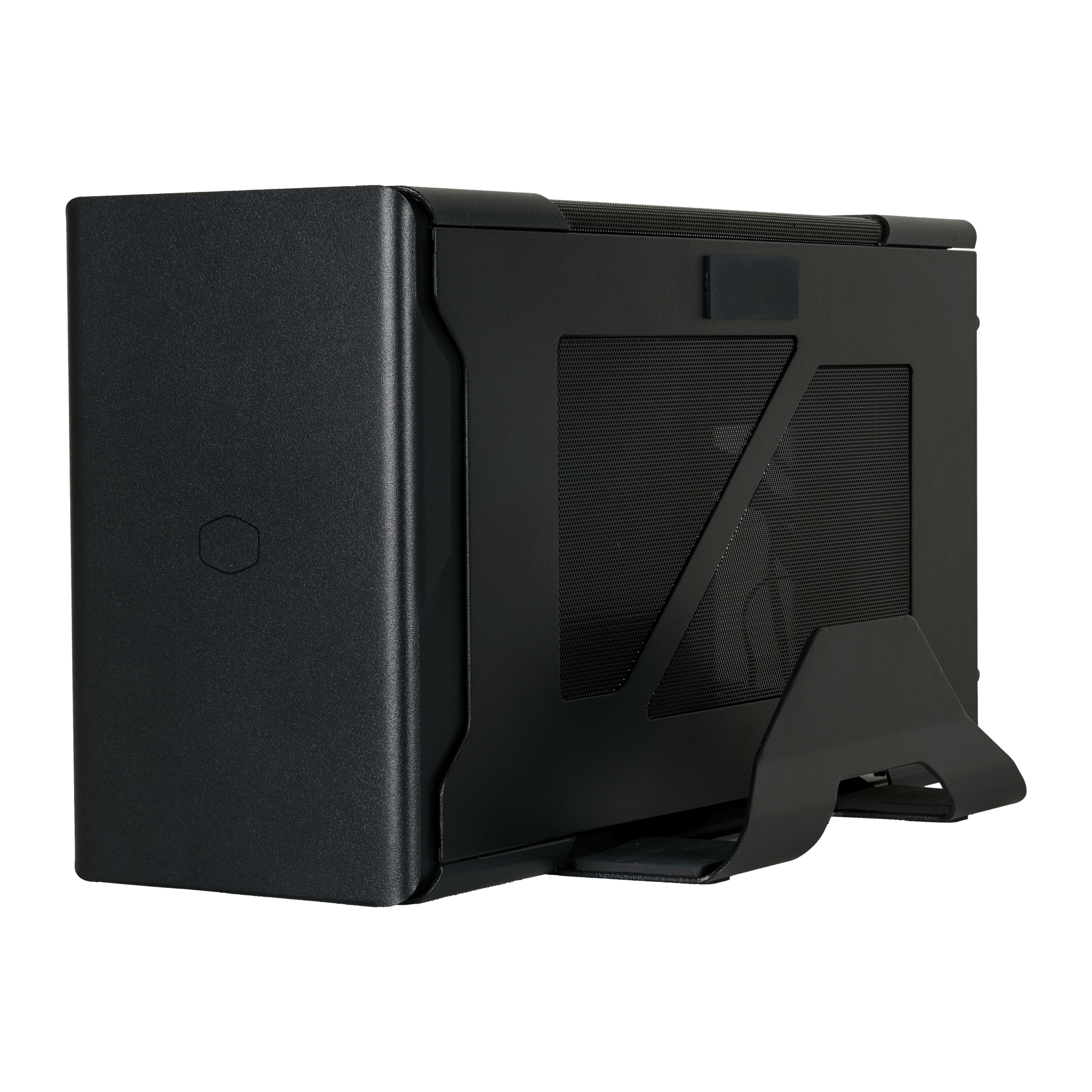
Image-Credit: Cooler Master
And one of my personal favorite parts of the EG200 is the built-in laptop stand. You wouldn’t think it, but it really clears up your desk and allows you to have your entire setup in one nice area.
The EG200 is one of the best eGPU enclosures you can get right now. The $400~ price tag is a bit steep, but considering all the features packed into this little box, I’d say it’s well worth the price.
Razer Core X Chroma
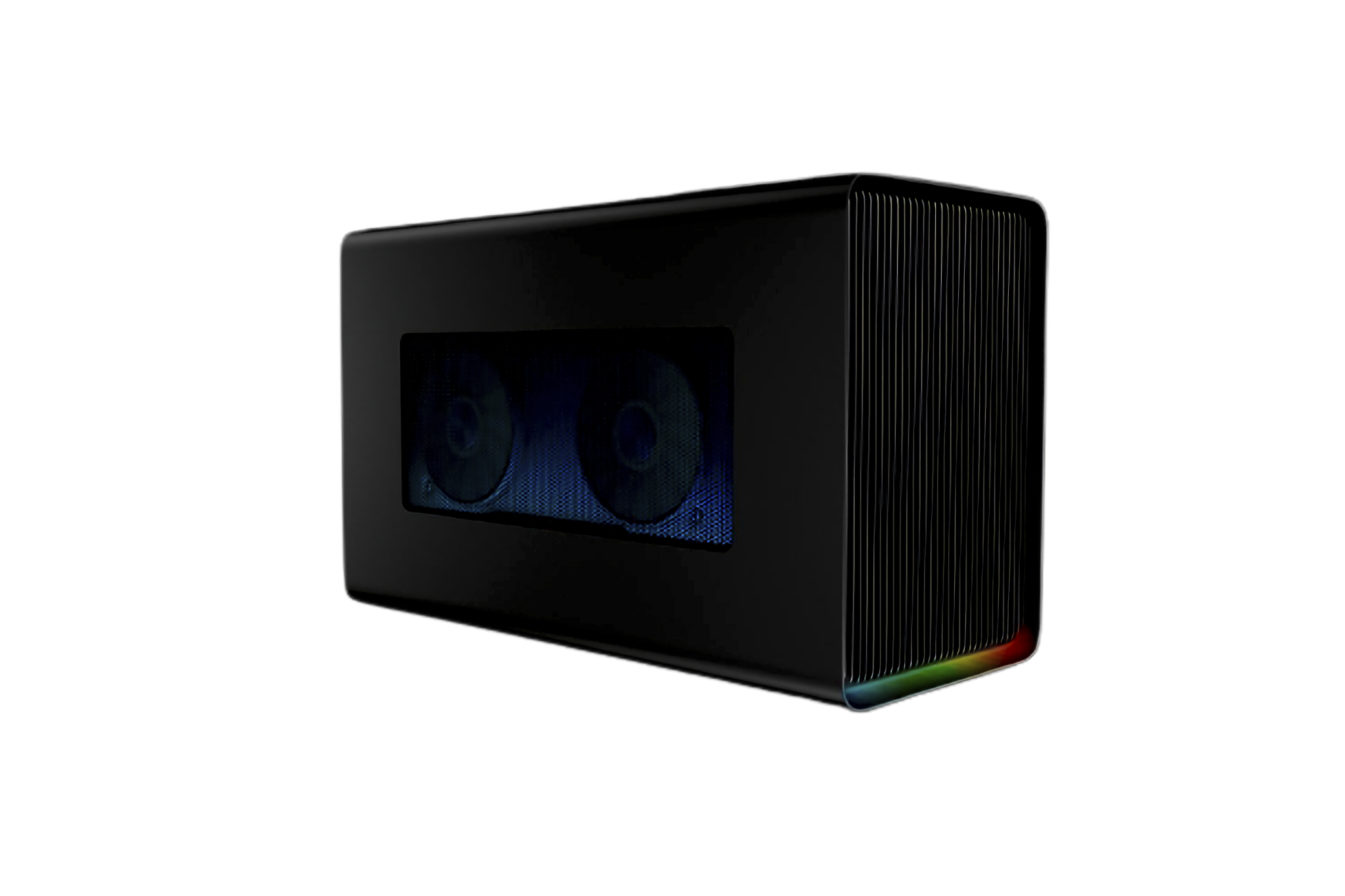
Image-Credit: Razer
Razer was one of the first companies that jumped on the opportunity to create eGPU enclosures, and they were also among the first to make a good eGPU enclosure and that shows in Razer’s Core X Chroma.
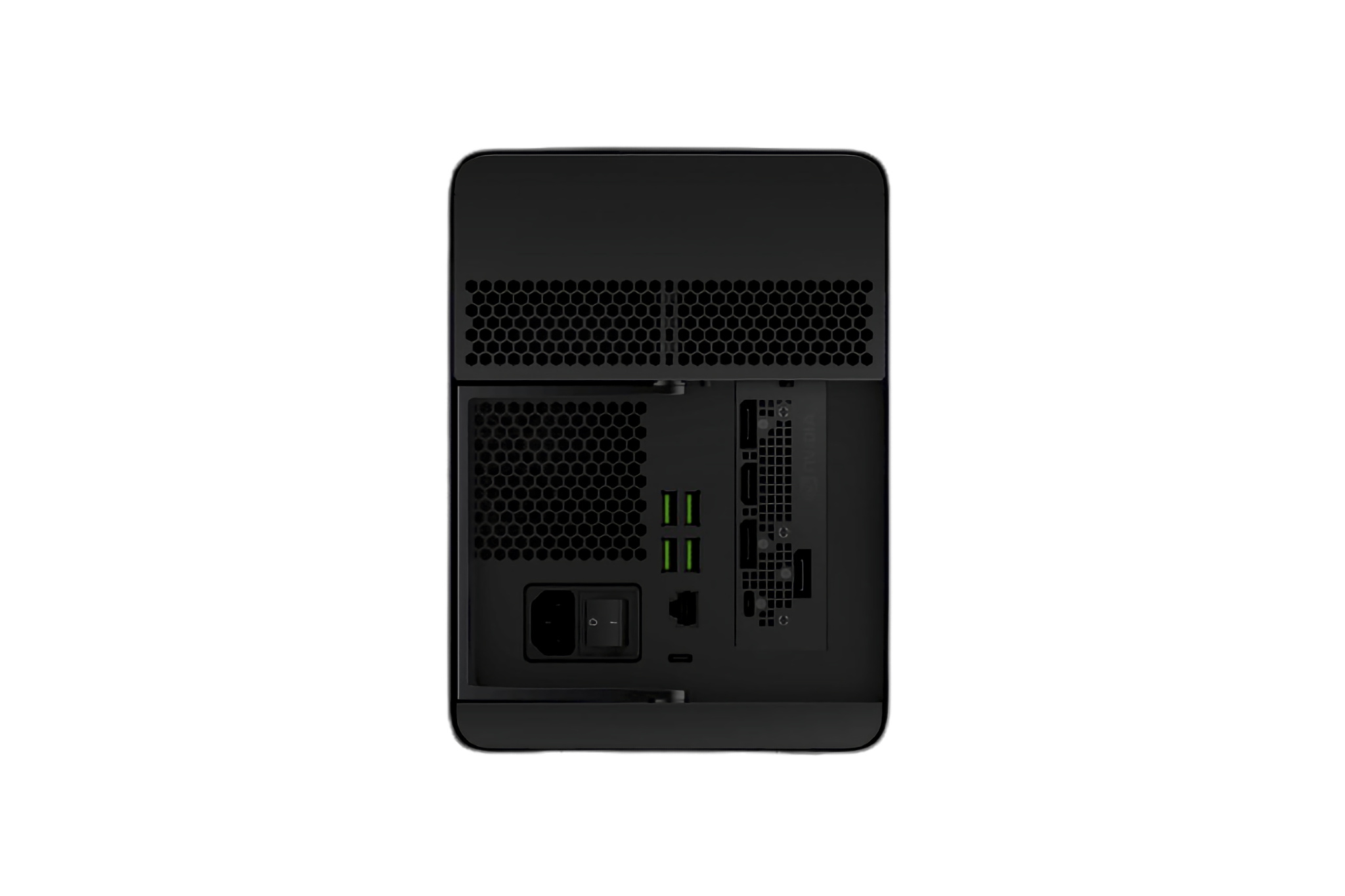
Image-Credit: Razer
It comes with a very beefy, and somewhat unnecessary, 700W power supply that powers the GPU and the rainbow of RGB LEDs that Razor is known for.
It’s a bit beefier than the EG200 by Cooler Master, and isn’t as durable, but it’s still a great eGPU enclosure with all the features you could ask for and more!
Even though the $500~ asking price is a little too much for my tastes, you really can’t get what Razor’s offering with anything else.
GIGABYTE Aorus RTX 3080 Gaming Box
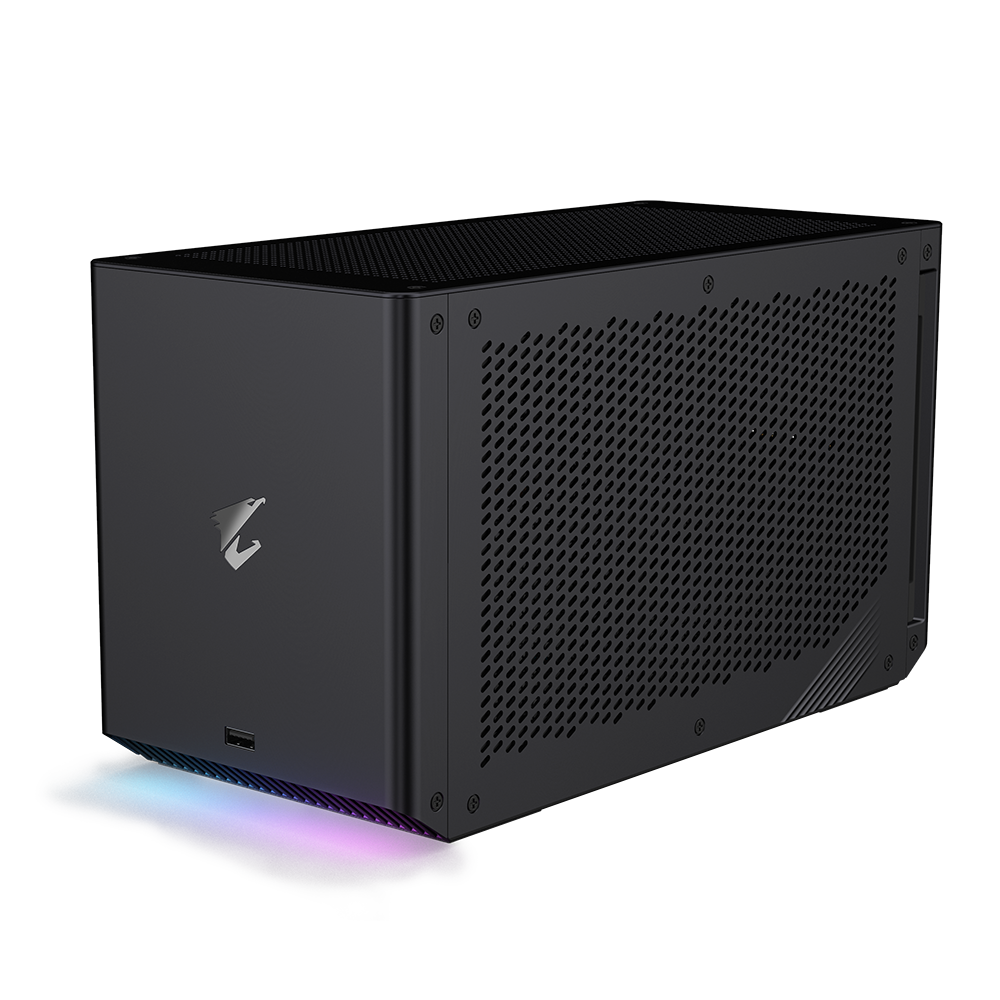
Image-Credit: GIGABYTE
The GIGABYTE Aorus Gaming Box is one of the best eGPU enclosures and comes with a GPU from the get-go.
This little thing is a veritable tank, built with high-quality aluminum and custom-made for the water-cooled RTX 3080 inside, it is one of the smallest eGPU enclosures that you can get.
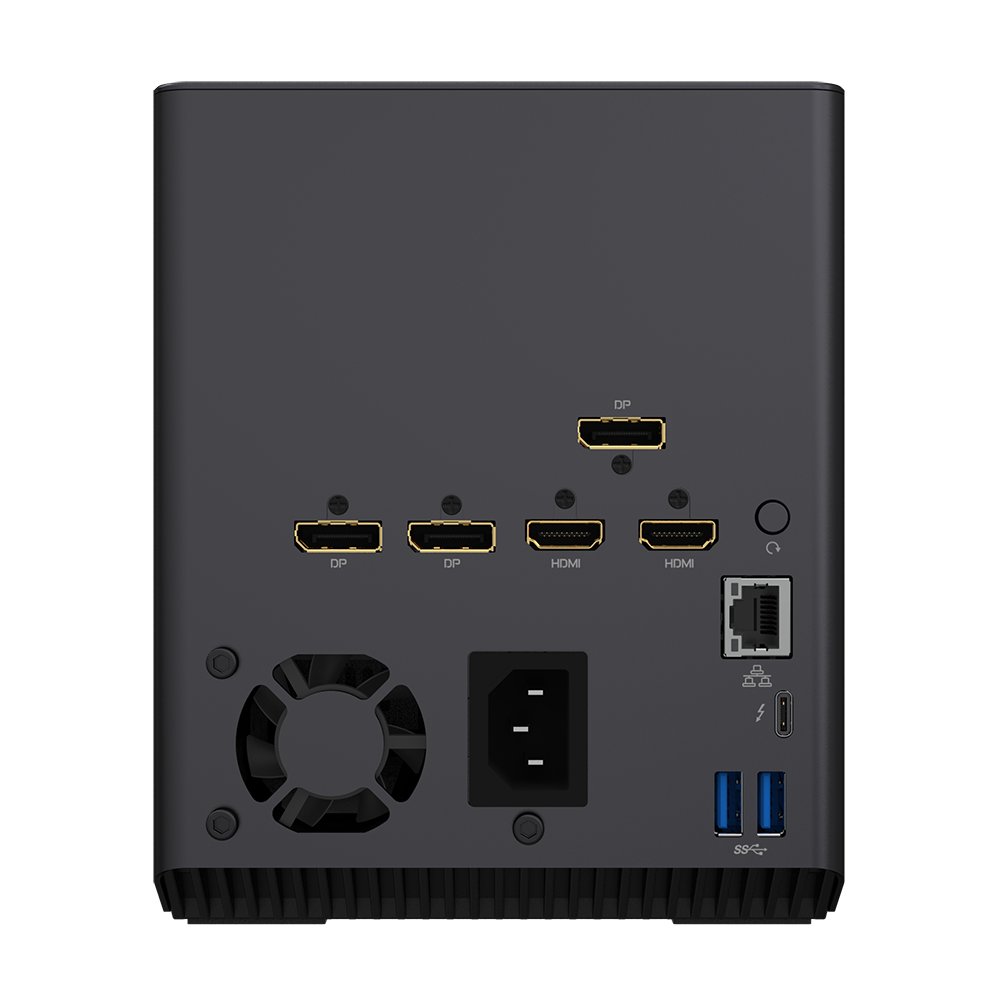
Image-Credit: GIGABYTE
It doesn’t have as many USB ports or other fancy bells and whistles as other eGPU enclosures we’ve talked about, however, it is one of the best looking and well made eGPU enclosures around.
Combine that with the included GPU and you don’t have to worry about fiddling around with anything, you can just plug it in and get to work.
The Gaming Box is the most expensive option here at over $1000 (currently over double that), but if you can get it for MSRP, it is one of the simplest plug-and-play options available.
In Summary
eGPU setups are a great way to upgrade your older or lower-powered laptop with a GPU that’s powerful enough to render, play games, and whatever other GPU-heavy tasks you might have in mind.
But at the same time, they’re very situationally useful.
Sometimes it’s better to just save up and get a whole new laptop/desktop when you factor in the total costs of an eGPU setup.
But if you have the money and a workflow that benefits from it, an eGPU can take your productivity to the next level.
FAQ
Are eGPU enclosures worth it?
That’s a hard question to answer.
They’re very situational. If you have a laptop that is capable of using an eGPU enclosure, they can potentially be worth it.
However, as it is currently, eGPUs will only be able to give you performance somewhere in the range of 40 – 75% of what it could do in a desktop PC.
The percentage goes down as the GPU becomes more powerful, and it goes up as it becomes less powerful.
So if you want to use an RTX 3090 in an eGPU enclosure, be ready to get a lot less of the performance it can actually give.
However, if you were to use something more modest, like an RTX 3060 or something from the previous generations, you’ll see much less throttling.
All in all, it depends on what you want and can spend.
For a good eGPU setup, you’ll most likely be spending $900+ for the enclosure and GPU if you don’t have one already.
Save up a bit more and you could use that money to get an actual desktop or a new laptop.
But if you like your laptop and you want to use it as a laptop while occasionally leveraging the power of a full GPU, an eGPU setup could be worth it.
Does an eGPU increase FPS?
It can. If you have a laptop with an iGPU (Integrated GPU), you will most likely see performance increases regardless of the bottlenecks.
But if your laptop already has a decently modern GPU like, say, an RTX 3060, the performance increases you’ll see will go down drastically; sometimes to the point where your laptop GPU outperforms the eGPU.
Does an eGPU reduce heat?
It can. It’s offloading work from your laptop GPU to the most likely better-cooled eGPU, so your laptop shouldn’t get as toasty.
But depending on what applications you’re running, your CPU will still be going full force, so that’ll most likely heat things up a bit, but overall, it’ll be less hot than if you were to just use your laptop’s internal components.
Why are eGPU enclosures so expensive?
Lower demand equals higher prices.
Manufacturers need to create the enclosures from scratch and it’s a relatively new technology that hasn’t gotten to the expansive mass production stage.
Not to mention that it’s a very niche product, very few people buy eGPU enclosures.
All of that makes it so that manufacturers can price enclosures however they please, and that makes it so that most enclosures are 200+ minimum.
Can you use USB-C with an eGPU enclosure?
Sadly, no. It’s not that it’s impossible, it’s more so that USB-C will bottleneck a GPU to hell and back to the point you would be getting 10 – 25% of the performance you could be getting with that GPU.
We don’t have time to go into detail about the differences between USB and Thunderbolt standards, but the gist of it is that, even though they now have the same type of connector, USB is slower than Thunderbolt.
This means that USB-C, for example, can’t transfer at the same speeds as Thunderbolt 3.
This doesn’t matter too much for general day-to-day activities, but when it comes to something that requires a ton of bandwidth like a GPU? Every GB counts.
So, considering that USB-C can transfer at speeds of about 10 Gb/s compared to Thunderbolt 3’s 40 Gb/s, it starts to make a bit more sense as to why you can’t use USB-C for eGPUs.
Also, keep in mind that a PCIe Gen 4 x16 slot (what you’d plug your GPU into in a desktop) can transfer at speeds of about 252 Gb/s, so even Thunderbolt is a major bottleneck.
Can you use an eGPU with a desktop computer?
If your motherboard has a Thunderbolt port, you potentially could.
Though, I’m not sure why you would. You’d be leaving a lot of performance on the table and just creating bottlenecks for yourself for no reason at all.
The chance of your motherboard supporting Thunderbolt, but not having any PCIe slots is very, very, unlikely.
So unless your PCIe port is broken or something, I wouldn’t recommend plugging an eGPU into your desktop computer through Thunderbolt.
Got any other unanswered questions about eGPU enclosures? Ask us in the comments or our forum!
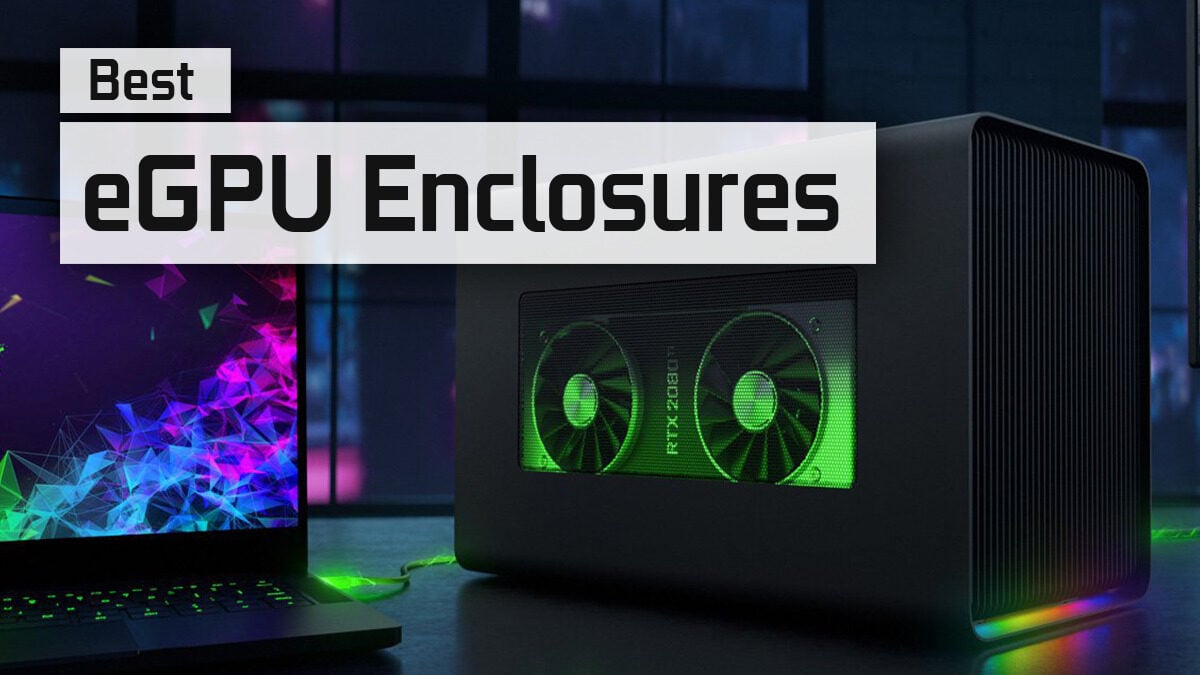
![What is the Best GPU for Video Editing and Rendering? [Updated] What is the Best GPU for Video Editing and Rendering? [Updated]](https://www.cgdirector.com/wp-content/uploads/media/2019/12/BestGPUForEditingAndRendering-Twitter_1200x675-594x335.jpg)
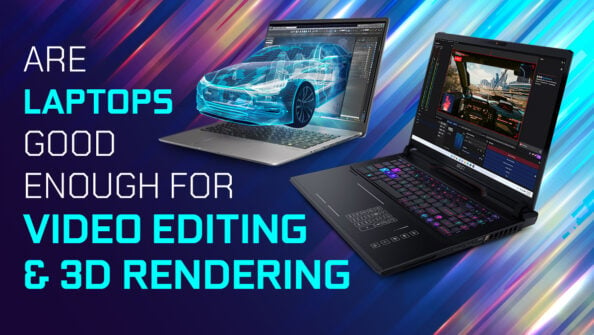
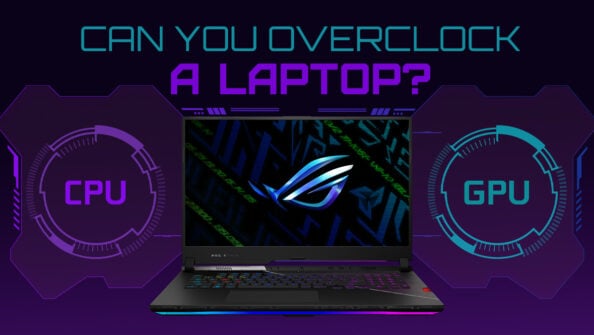
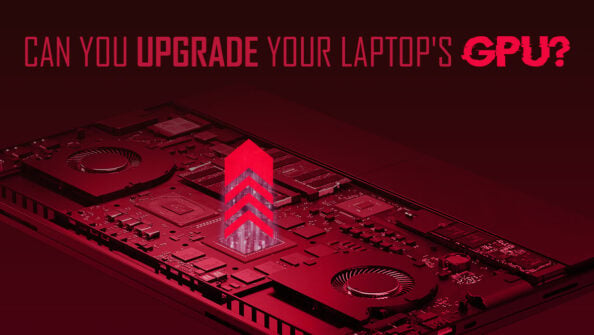

4 Comments
3 May, 2022
Why can’t you hook up 2eGPU’s if u have to two thunderbolt 3 or 4 ports.
3 May, 2022
You can, BUT because they all go through the chipset, which is max x4 pcie lanes wide (on mainstream platform), you’ll throttle the bandwidth of your external GPUs. Especially if other things like an NVMe SSD are also routed through the chipset.
This would be less of a problem on a HEDT platform, but for mainstream, it’ll work only by limiting the full potential of the GPU(s).
Cheers,
Alex
23 March, 2022
Hey Alex,
thanks for the nice article! I would like to know whether my laptop and use case is suitable to be boosted by an eGPU enclosure or not. I have an XPS 9750 with an i7-8750H, 16GB Ram and a GTX 1050 Ti Max-Q. I rarely use the built-in screen. And yes there is a Thunderbolt jack. I need to do more rendering in the future which uses GPU (Keyshot) but I also could use a single core performance for Rhino 7 since it can only utilize one core for geometry calculations. The question is: new workstation for 4k or a eGPU + (maybe with CPU) for less?
Cheers man
30 March, 2022
Hey Moe,
eGPUs are considerably weaker than their internal counterparts, so if you do have the budget for a workstation you’ll be happy long-term, especially because you can upgrade it and add more GPUs over time.
An eGPU is great if you know you just need a bit more performance that the Laptop itself can’t deliver, but if that eGPU becomes too slow as well in a year or so, you won’t be able to just hook up a second one. etc. I’d go get a workstation from the get-go if you think you’ll be able to make use of it.
If you’ve got thunderbolt, then yes most eGPU enclosures should work with it.
Cheers,
Alex